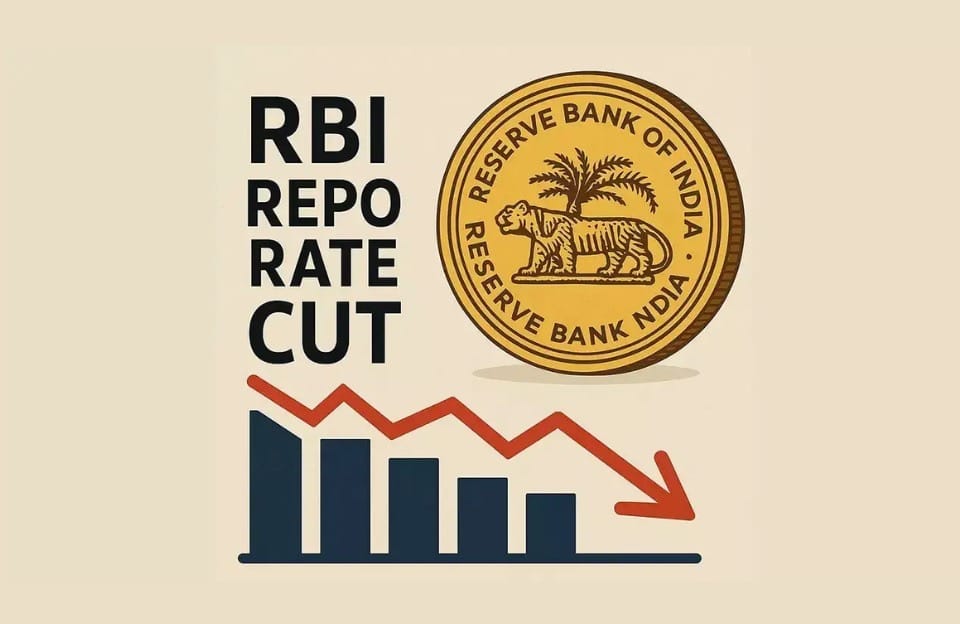Part 7 of 8-Part Series: Exploring India’s Unstoppable Growth and the Challenges It Must Navigate
Can Monetary Policy Fuel India’s Growth Amid Global Headwinds?
In mid-2025, India’s economy exhibits promising signs of expansion, propelled by the Reserve Bank of India’s strategic rate adjustments and solid internal demand. Nevertheless, the recent flare-up in tensions between Iran and Israel, which briefly raised fears of disruptions in key oil routes, underscores potential vulnerabilities through volatile energy costs. This examination evaluates the central bank’s monetary approach in the context of international rate trends, its capacity to stimulate progress, and the geopolitical instabilities stemming from the Middle East situation as of July 13, 2025.
The RBI’s policies are crafted to navigate these complexities, balancing domestic growth imperatives with external risks. By integrating recent economic indicators, we assess whether easing measures can sustain momentum or if global factors might necessitate a shift.
RBI’s Easing: A Growth Engine?
With consumer price inflation easing to 2.82% in May 2025—the lowest in over six years—the central bank reduced the repo rate by 50 basis points to 5.50% in early June, marking the third consecutive cut since February. This move is designed to encourage spending and capital outlays, aligning with forecasts of 6.4% GDP expansion for the 2024-25 fiscal year. Record tax collections exceeding 2 trillion rupees, rebounding rural consumption, and a supportive monsoon season reinforce this positive outlook. However, officials have highlighted constraints on further flexibility due to international pressures, especially those linked to energy market fluctuations from regional conflicts.
The easing cycle reflects a proactive stance to counter slowdown signals from earlier quarters, where growth dipped to 5.4% in the second quarter. By lowering borrowing costs, the policy aims to invigorate sectors like manufacturing and services, which contribute over 70% to GDP. Domestic factors, including increased infrastructure spending and digital economy advances, provide a buffer, but the effectiveness hinges on containing imported inflation.
Global Rates: A Cautious Stance
In contrast to India’s accommodative position, major economies are adopting a more restrained approach amid lingering price pressures. The U.S. central bank, after initial reductions, is likely to hold steady if energy-driven inflation approaches 6%. European and British authorities face similar dilemmas from supply disruptions, with recent decisions reflecting divided views on further loosening. This global conservatism diverges from India’s room for maneuver, yet shared vulnerabilities to oil shocks could diminish relative advantages.
International benchmarks remain elevated, with U.S. rates around 4.5%, influencing capital flows and currency stability. For India, this means potential rupee depreciation if differentials widen, complicating import costs. The interplay highlights the need for vigilant monitoring, as synchronized tightening abroad could amplify domestic challenges.
Iran-Israel Conflict: A Geopolitical Threat
The conflict escalated dramatically in mid-June 2025, with Israeli strikes on Iranian targets followed by retaliatory actions, driving Brent crude prices up temporarily to around 74 dollars per barrel before stabilizing near 70 dollars by July 13. While Iran threatened to disrupt the Strait of Hormuz—a conduit for 20-25% of world oil—the scenario did not materialize, averting a major crisis. Iran’s economic dependencies, including exports to key partners, and limited capabilities reduced the likelihood of prolonged blockade.
Short-lived disruptions contributed to volatility, but a fragile ceasefire by late June eased immediate concerns. Prices have since moderated, reflecting de-escalation and alternative supply routes. For India, reliant on Middle Eastern sources for 40% of imports, this episode underscores exposure, though diversified sourcing from Russia and others mitigated impacts.
Probability of Strait of Hormuz Closure
A complete shutdown appears improbable given mutual economic stakes and historical patterns. Iran’s export reliance through the strait—96% to markets like Asia—and fiscal strains deter aggressive moves. Diplomatic channels and naval limitations further lower risks. Estimates place the odds low, but partial interruptions could elevate prices to 80-90 dollars per barrel, with extreme scenarios exceeding 100 dollars.
As of July 2025, stability has returned, but lingering tensions warrant preparedness. India’s strategic reserves, holding 74 days of imports, offer short-term cushions against spikes.
Timeline for Oil Price Impact
Immediate (1-2 weeks): Initial rhetoric sustained prices at 75-80 dollars, with minimal inflationary pass-through due to buffers.
Short-term (1-3 months): Extended skirmishes might push costs to 80-90 dollars, affecting India’s bills by the fourth quarter of 2025.
Medium-term (3-6 months): Sustained issues could breach 100 dollars, prompting policy reversals in early 2026.
De-escalation within weeks has already guided prices back to 65-70 dollars, preserving growth prospects and enabling continued easing.
This timeline illustrates the conflict’s transient yet potent influence, emphasizing the value of rapid resolution for economic steadiness.
Implications for India
With 90% oil import dependence, surges inflate bills, weaken the currency, and fuel inflation, as seen in a 573-point market drop on June 13. However, diversified suppliers and reserves equivalent to months of needs enhance resilience. Stable liquefied natural gas inflows from regional partners further insulate energy security.
Monetary tools must adapt; while current easing supports recovery, prolonged volatility could necessitate pauses or reversals to safeguard stability.
Monetary Policy Outlook: A High-Stakes Balancing Act
The central bank’s trajectory relies on curbing inflation amid regional instability. Swift conflict resolution would maintain low energy costs, permitting further cuts to accelerate consumption and investments, potentially exceeding 7% GDP growth. Conversely, extended unrest or disruptions would heighten inflation, compelling rate hikes by early 2026 to prioritize control over expansion. Global peers’ likely delays in easing, amid stronger currencies, could exacerbate import pressures.
Agility is paramount; data-driven decisions will be crucial to shield India’s ascent from exogenous shocks.
Conclusion
The central bank’s proactive easing holds strong potential to accelerate India’s expansion, but Middle East volatilities remain a wildcard. Rapid de-escalation unlocks pathways to robust progress; drawn-out issues risk inflationary spikes and stagnation. For everyday investors, diversifying into resilient areas like essentials and utilities, incorporating inflation hedges such as precious metals, and retaining liquidity for opportunistic buys during dips can provide safeguards. India’s competitive edge depends on geopolitical calm—staying alert is key to capitalizing on opportunities.


